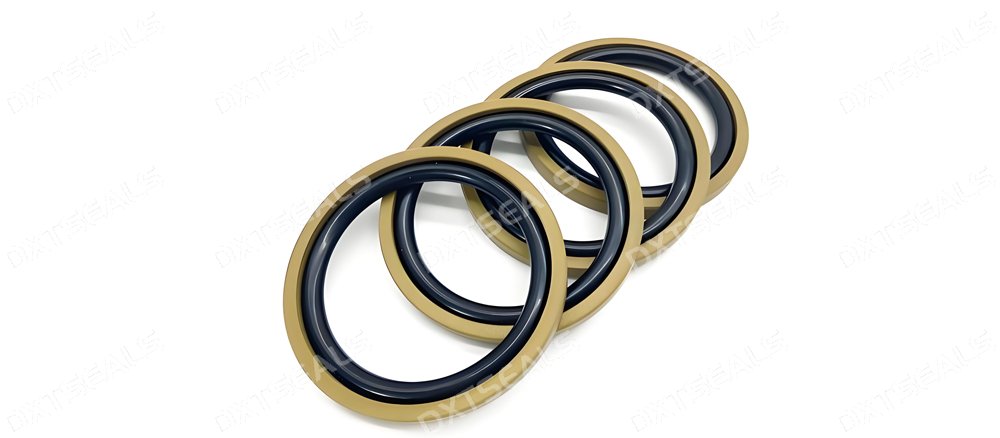
Oil seals, also known as shaft seals or rotary shaft seals, are essential components in many industrial and mechanical systems. They prevent lubricants from leaking and protect machinery from contaminants such as dust, dirt, and moisture. However, even the best-quality oil seal can fail prematurely if not installed and maintained correctly.
In this article, we’ll explore practical installation techniques and maintenance practices that help extend the service life of oil seals and ensure optimal performance—especially for equipment operating under demanding conditions. These tips are based on years of industry expertise from DXTSEALS, your trusted provider of advanced sealing solutions.
🔧 Key Oil Seal Installation Tips
1. Inspect the Shaft and Housing
Before installing the oil seal, carefully examine the shaft and bore for:
-
Burrs, scratches, or nicks
-
Shaft misalignment
-
Sharp edges that could damage the seal lip
🛠 Tip: The shaft surface should be smooth (0.2–0.8 µm Ra finish) and within the recommended tolerance to prevent premature wear.
2. Use the Right Installation Tools
Never force an oil seal into place with a hammer or makeshift tool. Instead, use a:
-
Seal driver set
-
Arbor press or hydraulic press
-
Installation sleeve for protection
🛠 Tip: The sealing lip should never come into contact with sharp edges or threading during installation—use a protective sleeve if needed.
3. Lubricate Properly Before Insertion
Apply a thin layer of compatible lubricant to:
-
The sealing lip
-
The shaft surface
-
The outer edge of the seal (optional, depending on seal design)
🛠 Tip: Avoid over-lubrication, which may cause the seal to slip or dislodge during startup.
4. Align the Seal Accurately
The seal must be installed perpendicular to the shaft axis. Misalignment may cause uneven wear, leaks, or seal failure.
🛠 Tip: Use visual inspection or alignment tools to verify straight, centered installation.
5. Press the Seal to Correct Depth
Push the seal to the specified depth recommended by the equipment manufacturer. Avoid:
-
Over-insertion (may damage the spring or lip)
-
Under-insertion (may cause leakage)
🛠 Tip: Use a stopper or depth gauge to achieve consistency across installations.
🛠 Oil Seal Maintenance Guidelines
Proper maintenance helps identify potential seal issues early and prevents costly breakdowns.
✅ 1. Conduct Regular Inspections
Look for signs of:
-
Leakage around the seal area
-
Unusual noise or vibration
-
Hardened or cracked sealing lips
-
Shaft wear tracks
🛠 Tip: Schedule visual checks during routine equipment shutdowns.
✅ 2. Monitor Operating Conditions
High pressure, excessive temperature, or poor lubrication can lead to seal failure.
🛠 Tip: Keep operating parameters within the limits specified for your seal material (e.g., NBR, FKM, PTFE).
✅ 3. Clean the Area Around the Seal
Dirt and debris can damage the lip and cause contamination.
🛠 Tip: Use protective covers or dust shields in dirty environments.
✅ 4. Replace Seals at Signs of Degradation
Don’t wait until total failure. Replace oil seals when:
-
Lip wear is noticeable
-
There is consistent leakage
-
Shaft damage is observed
🛠 Tip: Replace seals as part of preventative maintenance programs to reduce unplanned downtime.
🔍 Common Mistakes to Avoid
-
Hammering seals into place
-
Installing dry seals without lubrication
-
Using seals incompatible with system fluids
-
Ignoring misalignment or shaft damage
-
Reusing old or worn seals
At DXTSEALS, we not only provide high-quality oil seals but also assist with best practices to ensure they function reliably in any environment.
🏁 Conclusion
Oil seals may be small, but their correct installation and maintenance are critical to the performance and longevity of mechanical systems. Whether you’re maintaining rotating equipment in manufacturing, automotive, or heavy industry, following proper sealing practices helps prevent premature failure and reduces costly downtime.
By partnering with DXTSEALS, you gain access to expert advice, premium sealing products, and tailored solutions for any industrial application.
🔗 For product selection support or custom sealing solutions, visit www.dxtseals.com today.
